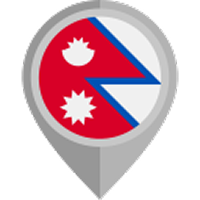Nepal vision | 04/09/2023
Nepal is heaven for trekkers and nature enthusiasts. However, every trail has obstacles a trekkers must face, making it difficult in Nepal.
But the landscape transitioning from lowland plains to towering peaks offers diverse trekking experiences.
Every trail has its unique features, and as the saying goes, there is no gain without any pain, right?
So, what's remarkable about the problematic treks in Nepal?
What are the factors that define a difficult trek in Nepal?
These factors combine to create an adventure that tests the limits of trekkers' physical and mental endurance. Below, we delve into the key elements that define a challenging trek:
- Altitude: High altitudes exceeding 4,000 meters, thin air, and altitude-related illnesses are defining factors.
- Duration: Longer treks spanning weeks demand physical endurance and mental fortitude.
- Remoteness: Trekking in remote regions far from civilization necessitates self-reliance and preparedness.
- Physical Demands: Strenuous hiking, steep terrain, and carrying backpacks pose physical challenges.
- Extreme Weather: Trekkers may face scorching heat in lowlands and freezing temperatures at higher altitudes.
- Lack of Infrastructure: Limited trekking facilities require self-sufficiency, including camping and food carrying.
- Technical Challenges: Some treks involve glacier crossings, icefalls, or river crossings, requiring specific skills.
- Permits and Regulations: Trekking often requires permits and adherence to area-specific regulations.
After considering the factors, there are different trekking trails in Nepal that you can explore with your pals.
Ranking the Treks: From Easier to Hardest
While Nepal is renowned for its serene beauty and cultural richness, its allure of challenging treks captivates adventurous travelers.
Let's break down the difficult treks, ready to increase your adrenaline level.
Everest Three Passes Trek
Everest Three pass trek is a daring and extraordinary journey through the iconic Everest region of Nepal.
Unlike the classic Everest Base Camp trek, this adventure takes trekkers on a challenging path that includes three high mountain passes, each exceeding 5,000 meters (16,400 feet) in elevation. It's a demanding yet highly rewarding trek providing a comprehensive Everest region experience.

Unique Features
- Three High Passes: The highlight of this trek is conquering three formidable mountain passes: Renjo La (5,360m), Cho La (5,420m), and Kongma La (5,535m). These passes offer breathtaking panoramic views of the Himalayan giants, including Mt. Everest, Ama Dablam, and Cho Oyo.
- Off the Beaten Path: The Everest Three Passes Trek diverges from the standard route, providing a less crowded and more adventurous experience. Trekkers get to explore remote areas and hidden valleys, offering a genuine sense of wilderness.
- Gokyo Lakes: Along the way, trekkers encounter the serene Gokyo Lakes, a series of pristine turquoise glacial lakes surrounded by towering peaks. This natural beauty is a soul-soothing sight that contrasts the rugged terrain.
- Tibetan Culture: Trekkers pass through several Tibetan-style villages, immersing themselves in the unique culture and traditions of the Sherpa people. This cultural immersion adds a rich layer to the trekking experience.
Challenges
- High Altitude: The Everest 3 Passes Trek involves trekking at extreme altitudes, where the air becomes thin and oxygen levels drop. Trekkers must acclimatize carefully to avoid altitude sickness.
- Physical Endurance: With daily walking hours ranging from six to eight, trekkers need to be physically fit and mentally prepared for long, strenuous days of trekking. Steep ascents and descents are common.
- Harsh Weather: The Everest region is known for its unpredictable weather. Trekkers may encounter cold temperatures, strong winds, and snow, especially at higher altitudes. Proper gear is essential.
Upper Dolpo Trek
The Upper Dolpo Trek offers an unparalleled opportunity to explore the remote and mystical wilderness of the Dolpo region. It is tucked away in the far-western reaches of Nepal.
The trek takes adventurers to the heart of Shey Phoksundo National Park, home to the Phoksundo Lake and ancient villages and monasteries that echo centuries of history and culture.









